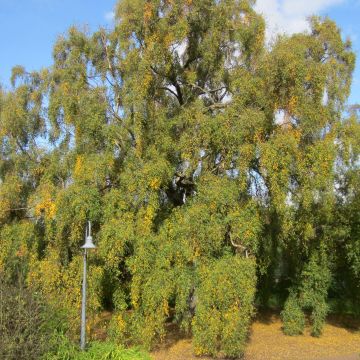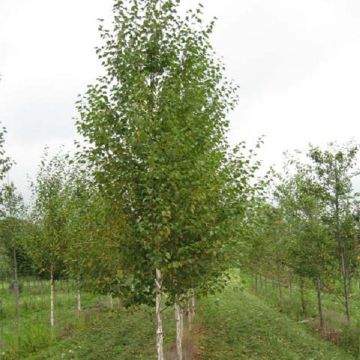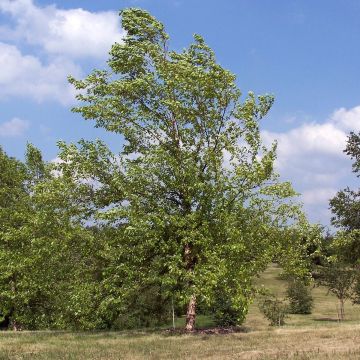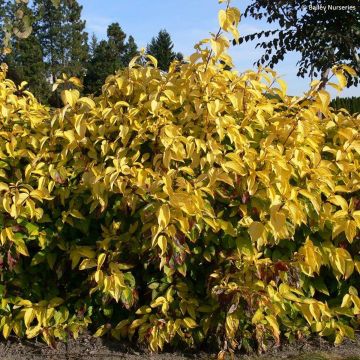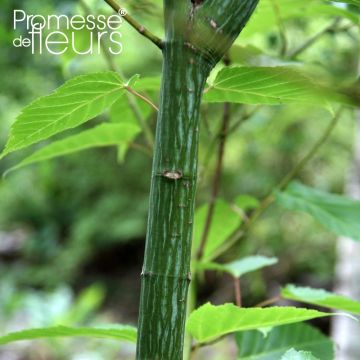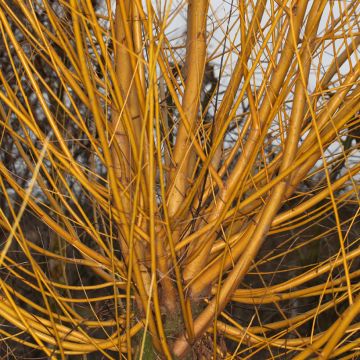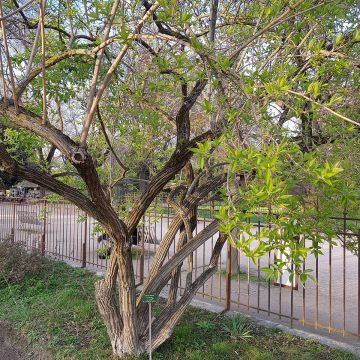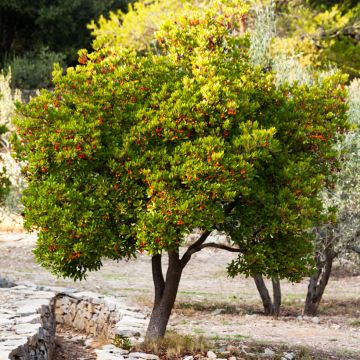

Betula albosinensis Blason Minrouge - Chinese Red Birch
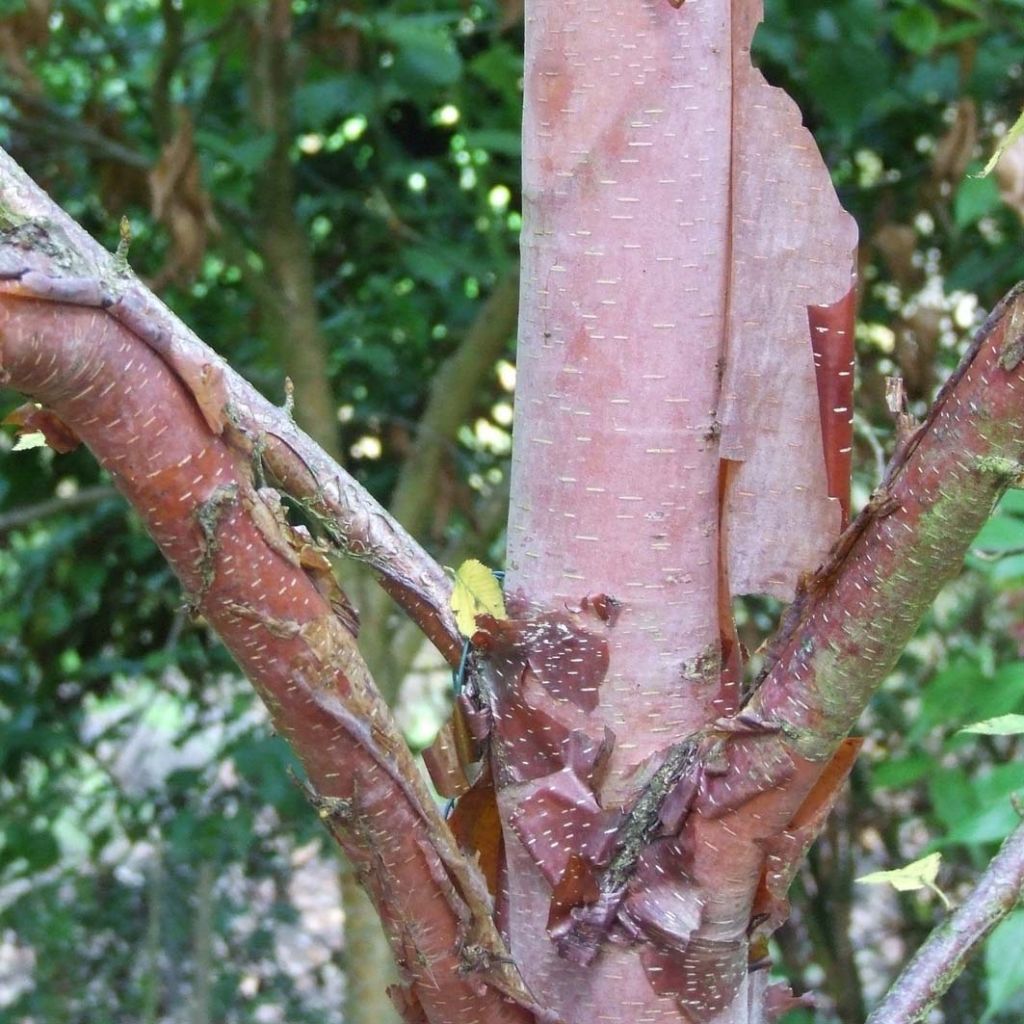

Betula albosinensis Blason Minrouge - Chinese Red Birch


Betula albosinensis Blason Minrouge - Chinese Red Birch


Betula albosinensis Blason Minrouge - Chinese Red Birch
Betula albosinensis Blason Minrouge - Chinese Red Birch
Betula albosinensis Blason ® 'Minrouge'
Chinese Red Birch, Chinese Red-Barked Birch
Why not try an alternative variety in stock?
View all →This plant carries a 24 months recovery warranty
More information
We guarantee the quality of our plants for a full growing cycle, and will replace at our expense any plant that fails to recover under normal climatic and planting conditions.
Oversize package: home delivery by special carrier from €6.90 per order..
Express home delivery from €8.90.
Does this plant fit my garden?
Set up your Plantfit profile →
Description
Betula albosinensis Blason 'Minrouge' is a lovely French selection selected in the new millennium. This small tree with a pyramidal habit comes from the Chinese Birch, famous for the beauty of its bark. This variety has good vigour and a less significant growth than its parent. Its main asset remains its magnificent bark, painted with a shiny red that plays beautifully with the low winter light. The trunk and branches peel, giving way to a new, lighter, more pinkish bark speckled with white. The deciduous foliage takes on a beautiful golden hue in autumn before falling. It can be planted on its own on a lawn or in front of a large grove of deciduous or evergreen trees, in full light.
The Chinese Birch is a deciduous tree native to the clear mountain forests located in western China, growing at altitudes between 2000 and 4000m. The habit of this species, which can reach heights of up to 10-12m in nature, is clearly pyramidal and quite broad.
The cultivar 'Blason Minrouge' was selected by Christian Peyron in the Bois Marquis park, in Isère. Due to its relatively slow growth, it will reach a height of 8m and spread over 4 to 5m after many years. At the age of 10, it will reach approximately 4m in height and 3m in width. Its pyramidal and spreading crown, consists of numerous thin and flexible branches covered with a brilliant red-pink-orange bark. The rather short trunk is covered with a magnificent carmine-red bark that peels off in long flakes. Its ovoid to triangular leaves are dark green, smooth on the upper surface and hairy and glandular on the lower. The leaf is bordered by double teeth. The leaves turn golden yellow in autumn. The inflorescences appear in April in the form of pendulous catkins of a greenish yellow colour. The root system of this tree is quite shallow, dense, and composed of secondary roots carrying numerous rootlets. It would be better to keep this beautiful birch away from the house, as strong winds could potentially uproot it, especially when it is heavily leafed and the soil is very moist.
The Chinese Birch is a very tolerant species in terms of soil, as long as it is not too dry. Its main attraction is its bark, but its moderate development and slow growth are real assets for medium-sized, or even small gardens. However, it is in winter that it will stand out the most! It lends itself to superb associations with other remarkable plants in winter, such as multicoloured Dogwoods or fragrant winter-flowering Witch Hazels. It also allows for contrasting colour combinations, for example when paired with black Ophiopogons, certain purple Hellebores, or the foliage of 'Black Lace' Elderberry in summer. Its autumn foliage will blend well with that of Nyssa sylvatica in acidic and moist soil, with deciduous Viburnums (Viburnum lantana, V. opulus, and their cultivars...), or with Parrotia persica in drier, slightly calcareous soil.
Report an error about the product description
Betula albosinensis Blason Minrouge - Chinese Red Birch in pictures




Plant habit
Flowering
Foliage
Safety measures
Botanical data
Betula
albosinensis
Blason ® 'Minrouge'
Betulaceae
Chinese Red Birch, Chinese Red-Barked Birch
Betula utilis subsp. albosinensis 'Minrouge' BLASON®
Cultivar or hybrid
atteinterespiratoire
Cette plante peut entraîner des symptômes allergiques.
Evitez de la planter si vous ou vos proches souffrez de rhinite saisonnière ("rhume des foins").
Davantage d'informations sur https://plantes-risque.info
Other Betula - Birch tree
Planting and care
Easy to grow in a not too dry, even poor, slightly chalky or even clayey soil, Chinese birch requires little maintenance, except for regular watering in prolonged drought. It is best planted in moist, humus-rich, fertile, not waterlogged soil to obtain beautiful foliage colourations, but it will also thrive in neutral to slightly chalky soil, in full sun or, at most, in partial shade. Pruning is not necessary, and the plant is not very susceptible to diseases or parasites.
Planting period
Intended location
Care
This item has not been reviewed yet - be the first to leave a review about it.
Decoratively-wooded shrubs
Haven't found what you were looking for?
Hardiness is the lowest winter temperature a plant can endure without suffering serious damage or even dying. However, hardiness is affected by location (a sheltered area, such as a patio), protection (winter cover) and soil type (hardiness is improved by well-drained soil).

Photo Sharing Terms & Conditions
In order to encourage gardeners to interact and share their experiences, Promesse de fleurs offers various media enabling content to be uploaded onto its Site - in particular via the ‘Photo sharing’ module.
The User agrees to refrain from:
- Posting any content that is illegal, prejudicial, insulting, racist, inciteful to hatred, revisionist, contrary to public decency, that infringes on privacy or on the privacy rights of third parties, in particular the publicity rights of persons and goods, intellectual property rights, or the right to privacy.
- Submitting content on behalf of a third party;
- Impersonate the identity of a third party and/or publish any personal information about a third party;
In general, the User undertakes to refrain from any unethical behaviour.
All Content (in particular text, comments, files, images, photos, videos, creative works, etc.), which may be subject to property or intellectual property rights, image or other private rights, shall remain the property of the User, subject to the limited rights granted by the terms of the licence granted by Promesse de fleurs as stated below. Users are at liberty to publish or not to publish such Content on the Site, notably via the ‘Photo Sharing’ facility, and accept that this Content shall be made public and freely accessible, notably on the Internet.
Users further acknowledge, undertake to have ,and guarantee that they hold all necessary rights and permissions to publish such material on the Site, in particular with regard to the legislation in force pertaining to any privacy, property, intellectual property, image, or contractual rights, or rights of any other nature. By publishing such Content on the Site, Users acknowledge accepting full liability as publishers of the Content within the meaning of the law, and grant Promesse de fleurs, free of charge, an inclusive, worldwide licence for the said Content for the entire duration of its publication, including all reproduction, representation, up/downloading, displaying, performing, transmission, and storage rights.
Users also grant permission for their name to be linked to the Content and accept that this link may not always be made available.
By engaging in posting material, Users consent to their Content becoming automatically accessible on the Internet, in particular on other sites and/or blogs and/or web pages of the Promesse de fleurs site, including in particular social pages and the Promesse de fleurs catalogue.
Users may secure the removal of entrusted content free of charge by issuing a simple request via our contact form.
The flowering period indicated on our website applies to countries and regions located in USDA zone 8 (France, the United Kingdom, Ireland, the Netherlands, etc.)
It will vary according to where you live:
- In zones 9 to 10 (Italy, Spain, Greece, etc.), flowering will occur about 2 to 4 weeks earlier.
- In zones 6 to 7 (Germany, Poland, Slovenia, and lower mountainous regions), flowering will be delayed by 2 to 3 weeks.
- In zone 5 (Central Europe, Scandinavia), blooming will be delayed by 3 to 5 weeks.
In temperate climates, pruning of spring-flowering shrubs (forsythia, spireas, etc.) should be done just after flowering.
Pruning of summer-flowering shrubs (Indian Lilac, Perovskia, etc.) can be done in winter or spring.
In cold regions as well as with frost-sensitive plants, avoid pruning too early when severe frosts may still occur.
The planting period indicated on our website applies to countries and regions located in USDA zone 8 (France, United Kingdom, Ireland, Netherlands).
It will vary according to where you live:
- In Mediterranean zones (Marseille, Madrid, Milan, etc.), autumn and winter are the best planting periods.
- In continental zones (Strasbourg, Munich, Vienna, etc.), delay planting by 2 to 3 weeks in spring and bring it forward by 2 to 4 weeks in autumn.
- In mountainous regions (the Alps, Pyrenees, Carpathians, etc.), it is best to plant in late spring (May-June) or late summer (August-September).
The harvesting period indicated on our website applies to countries and regions in USDA zone 8 (France, England, Ireland, the Netherlands).
In colder areas (Scandinavia, Poland, Austria...) fruit and vegetable harvests are likely to be delayed by 3-4 weeks.
In warmer areas (Italy, Spain, Greece, etc.), harvesting will probably take place earlier, depending on weather conditions.
The sowing periods indicated on our website apply to countries and regions within USDA Zone 8 (France, UK, Ireland, Netherlands).
In colder areas (Scandinavia, Poland, Austria...), delay any outdoor sowing by 3-4 weeks, or sow under glass.
In warmer climes (Italy, Spain, Greece, etc.), bring outdoor sowing forward by a few weeks.





































